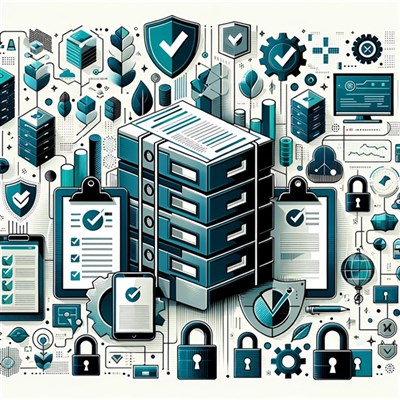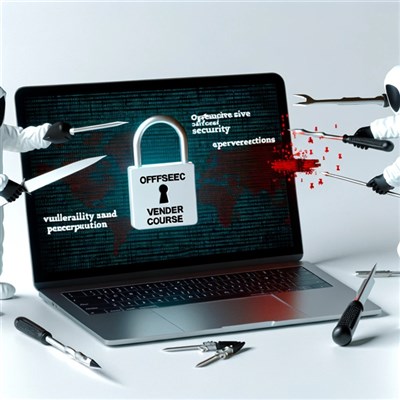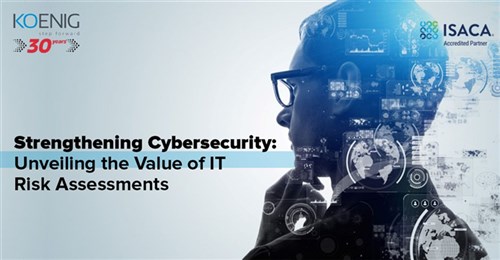min.pngL.jpg)
Cybersecurity is a domain of information technology that ensures systems, networks, and data remain secure against threats of fraud and information misuse. It encompasses data, hardware, and software protection within a network ecosystem of an organisation or institution.
With the rise in dependence on data and virtual transfers and information sharing, many organisations increasingly recognise the need for cybersecurity protocols. Cybercriminals are also becoming more sophisticated in their attempts at accessing, altering, extorting or deleting data and systems owned by individuals and organisations.
If you are considering switching your career to the cybersecurity domain or are just starting in the IT industry and want an area of specialisation, this blog will give you an introduction to cybersecurity and tell you everything you need to know about this domain.
Cybersecurity - An Introduction:
Cybersecurity encompasses the process and protocols designed to keep devices, systems, and networks safe from malicious third-party threats. Organisations generally hire cybersecurity professionals to keep their systems secure, increase customer confidence in their services and products, and optimise employee productivity.
The cybersecurity domain's foundational element is using various authentication protocols. These include multiple layers of security and identity authentication to ensure only authorised personnel access specific data and networks for the sake of system and data security.
Types of Cybersecurity Threats:
Keeping up with evolving trends, threats and technologies today is demanding. Businesses today must keep their assets and data secure against cyber threats. What makes it more challenging is the multiple forms that cyber threats take. Some of the most common types of cyber threats are given below.
- Malware: This is the most common form of cyber threat. Malware refers to malicious software such as viruses, trojans, worms and spyware that can corrupt computer systems and networks.
- Ransomware: This is another category of malware. The attacker here enters a computer system and locks the system files of the victim using encryption. They then demand a ransom for decrypting and unlocking these files.
- Social engineering: This refers to a type of cyberattack that depends on human interaction. Social engineering tricks users into overriding security protocols and giving them access to protected or sensitive data.
- Phishing: Phishing is a subcategory within social engineering. It uses fraudulent texts and emails resembling authentic sources. These are generally random attacks on groups of users to manipulate people into stealing protected data like login details or credit card information.
- Spear phishing: This is a subcategory within phishing and intentionally targets business organisations.
- Insider threats: This refers to any security breaches or data loss resulting from human error. Insider threats are caused primarily through negligence but can also be malicious.
- DDoS (Distributed Denial of Service): In a DDoS attack, multiple systems together disrupt the traffic of a website, network or system. They flood their targeted network resource with connection requests, packets and messages, slowing down the system or making it crash. This prevents legitimate users from accessing any data.
- APTs (Advanced Persistent Threats): An APT is a prolonged targeted attack where the attacker enters a network stealthily and stays undetected for a long period to steal or corrupt data when the time is right.
- MitM (Man-in-the-middle): MitM attacks involve an eavesdropping attacker who intercepts and relays the messages shared between multiple parties. All the parties involved remain unaware of the attacker.
These are the most common forms of cyberattacks. Other forms are drive-by-download attacks, malvertising, exploit kits, botnets, XSS attacks, BEC, zero-day exploits, vishing and credential stuffing attacks.
What do Cybersecurity Experts do?
Experts predict that the cybersecurity market will increase to a valuation of $248 billion by 2023 compared to its value in 2018, which was $152 billion.
An average day in the life of a cybersecurity professional involves the following responsibilities:
- Finding, testing and repairing vulnerabilities with the network infrastructure
- Monitoring systems to identify malicious content
- Identifying network breaches
- Installing firewalls, antivirus software and regular software updates
- Strengthening vulnerable areas and data points
Within the cybersecurity domain, there are several focus areas. Cybersecurity professionals work in at least one of these areas to ensure data and network security.
- Asset security: Analysing networks, routers, wireless points of access and computer systems
- Security engineering and architecture: Standardising secure procedures and policies
- Access and identity management: Tracking user accountability and authentication
- Security operations: Monitoring security and identifying attacks
- Security testing and assessment: Testing security policies, ensuring industry standard compliance
- Software development security: Creating code and testing it repeatedly
- Risk and security management: Identifying potential risks, implementing relevant security controls
Cybersecurity professionals resort to a wide range of different tactics while securing networks and systems. The most widely-used best practices are:
- Two-factor authentication
- Secure password implementation
- Regular update installation
- Antivirus installation
- Firewall installation to disable unused or unwanted services
- Using encryption or cryptography for system protection
- DNS or domain name server security
You May Also Like: Highest Paying Cyber Security Jobs & Salaries
Cybersecurity Courses and Certifications to Sharpen Your Skills:
Professionals looking to hone their cybersecurity skills can choose from several certifications. Some of the top certifications today are as follows.
- The ceh (certified ethical hacker) and comptia security+ 501 certifications equip professionals with the skills needed for security testing expertise.
- The CISSP (Certified Information System Security Professional) certification trains candidates for roles like Chief Information Security and the like. You need a minimum of 5 years of experience in IT security.
- The CISA (Certified Information System Auditor) certification helps students with auditing and verifying security policies and systems.
- The cism (certified information security manager) certification helps candidates manage the daily security challenges of an organisation through practical projects.
- The CRISC (Certified in Risk and Information Systems Control) credential focuses on critical business workflows that help determine their level of risk.
- The CSSP (Certified Cloud Security Professional) certification provides a broad architectural picture of cloud security and technology.
Each of these certifications has a common objective, which is to verify the skills of the certification holder as an expert in cybersecurity.
Benefits of Cybersecurity for an Organisation:
There are several benefits of cybersecurity implementation for organisations.
- Enterprise networks remain protected from data breaches and cyberattacks.
- Unauthorised users cannot access secure data or networks.
- Damage control and recovery time become more efficient.
- Endpoint devices and end users get increased protection.
- Networks comply with regulatory compliance standards.
- Developers, stakeholders, partners, employees and customers have more confidence in the brand and business reputation.
Challenges to Cybersecurity Today:
Technology is constantly evolving. As cybersecurity measures and protocols become more advanced, cybercriminals become more sophisticated. New methods and varieties of cyberattacks, changing risk management regulations and laws, internal negligence and other factors continue to challenge cybersecurity professionals at different levels.
The evolution of security risks remains one of the greatest challenges in the cybersecurity domain. The key problems include ensuring continual updates of all cybersecurity elements for protection against potential problems. This is a significant challenge for small organisations without the in-house resources or skills to update these elements.
What's more, sometimes organisations also gather large volumes of potential data on people using at least one of their offerings. With more data coming in, there is a higher chance of cybercriminals targeting organisations to steal their PII (personally identifiable information. For PII, cybercriminals launch ransomware attacks that breach cloud security to access this information.
Cybersecurity training programs today need to educate end-users as well as employees. Employee negligence could result in viruses accidentally entering their devices and systems. Ensuring they undergo regular training in security awareness should help them do their bit to keep the enterprise network free of threats.
Besides all these challenges, a fundamental obstacle for the existing cybersecurity domain is the absence of enough qualified personnel in the industry today. Business organisations around the world today are looking for qualified professionals to help manage, analyse and respond to challenges and attacks. According to (ISC)2, there is a gap of 3.1 million between the number of professionals needed and the number of trained professionals present.
Additional Read: How to Become a Cyber Security Engineer?
Career Opportunities for Cybersecurity Professionals:
One great benefit of getting a professional certification in cybersecurity is that you are prepared for a large number of job roles and profiles. This makes it a profitable pursuit and investment and can elevate your career significantly higher than your non-certified peers. Once you have a cybersecurity certification to your name, you are prepared for any of the following roles based on the level of expertise you currently possess:
- CISO (Chief Information Security Officer)
- CSO (Chief Security Officer)
- Security Engineers
- Security Architects
- Security Analysts
- Penetration Testers, also called pen testers or ethical hackers.
- Threat hunters or threat analysts
With more and more organisations realising the value of strong cybersecurity today, the adoption of cybersecurity protocols is at an all-time high. With experts predicting even higher growth in the days to come, this is the best time to steer your career journey toward this high-potential IT domain. Enrolling in a training course on Koenig will equip you with the skills and knowledge needed from an introduction to cybersecurity all the way to the expert level. Give your career the boost it deserves and register for a cybersecurity certification training course today.


.jpgM.jpg)
.pngM.jpg)
(1)(2).pngM.jpg)


COMMENT